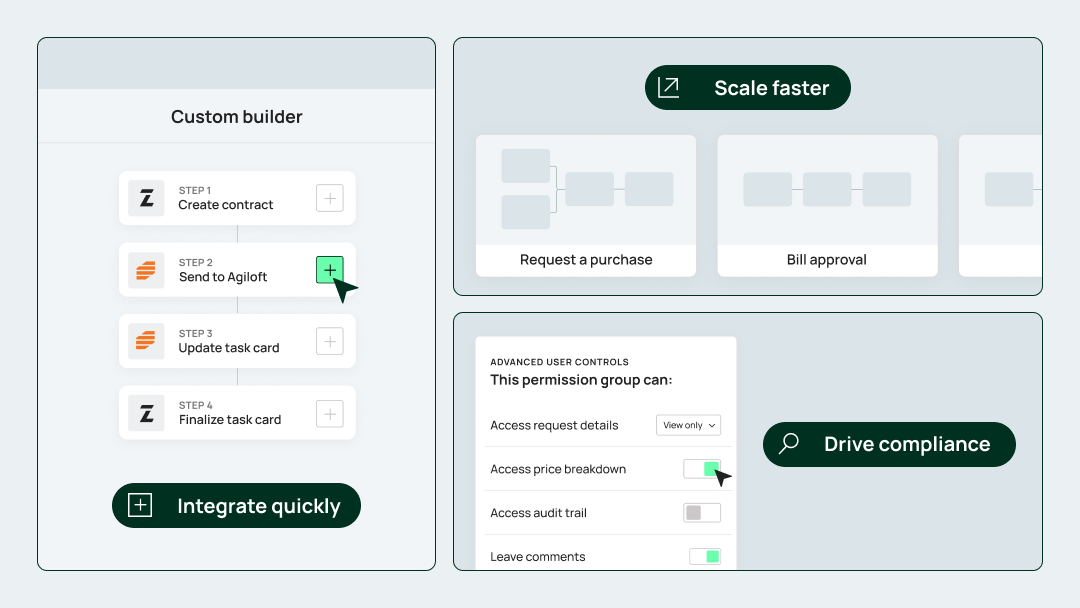Zip describes itself as the “leading Intake and Procurement Orchestration platform and Intake-to-Pay suite.” That doesn’t sound like the most exciting space to be in as a startup, but if you’ve ever worked inside a larger company, you know how Byzantine the process of buying even the most basic things can be. It’s annoying for the employee and hard to manage for the procurement, finance and legal teams who have to juggle different applications that can barely talk to each other.
To make all of this easier, Zip today announced Zip Premier, a set of new enterprise capabilities, as well as a new low-code integration platform that allows its users to build their own integrations to tap into services that Zip itself doesn’t support with its existing connectors. And to make it easier to onboard new customers, Zip is also launching a set of 100 pre-built workflow templates today. These include templates for working with contractors, managing auto-renewals and vendor offboarding, for example.
At its core, Zip brings together the fractured procurement process into a single platform that allows businesses to manage everything, from the original purchasing request to managing purchase policies and getting the sign-off from financial, legal and security teams, all the way to managing budgets, onboarding new vendors, creating purchase orders and processing invoices. Companies that already use third-party tools for any of these steps can continue to use those, with Zip then aggregating all of this data and managing the overall workflow.
“The problem is very horizontal and ubiquitous because this issue of an employee needing to buy something to do their jobs is very common across industries,” co-founder and CEO Rujul Zaparde said. He also stressed that the problems get more painful the larger a company becomes — and even more so when it’s an enterprise in a regulated industry.
The new features the company is launching for enterprises today include more granular permissions and new tools for maintaining audit trails for requests, permissions and vendors to ensure a company remains audit-ready. Zip is also adding new tools for monitoring the health of its integrations with third-party services and added real-time alerts for when things go sideways.
The new low-code integration platform is an interesting play. Zaparde acknowledged that it’s unlikely that companies will want their regular employees to build integrations into their financial systems, for example. But he does believe that this will help IT teams build and maintain these connectors, which will often tie into legacy or bespoke systems that Zip itself couldn’t support.
Zip is going up against several other procurement platforms from the likes of Coupa, SAP, Workday and more. But Zaparde argues that Zip’s advantage is that it can tie all of these systems together.
“Traditional procurement solutions don’t meet the complex needs of modern enterprises who face an intricate web of fractured procurement processes across many business teams and systems,” he said. “Developed alongside our largest enterprise customers, our new capabilities streamline the entire spending process, delivering enterprise-grade performance with consumer-grade flexibility so our customers can drive compliance and scale with speed.”


